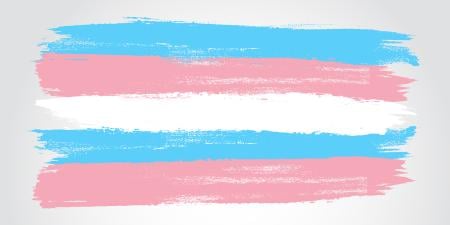Abstract
Increasing numbers of young transgender people are now using medical technologies to achieve a physical gender transition. However, the procedures of physical gender transition might cause temporary or permanent sterility. Thus many transgender people are now using fertility preservation technologies. Nonetheless, they can experience dilemmas in making reproductive and family-building decisions and face challenges in gaining access to and utilizing fertility preservation services. Based on qualitative research conducted with transgender men and women who used reproductive technologies for preserving their fertility before or during their physical transition, this paper contributes to the discourse of reproductive choice by the inclusion of transgender people’s experience.
Introduction
Studies of human reproduction, reproductive health, and reproductive practices have focused on cissexism (a belief that transsexuals’ identified genders are inferior to, or less authentic than, those of cissexuals). Transgender reproduction is almost invisible in transgender studies as well as in studies of reproduction, which mainly have focused on whether transgender people should be offered assisted reproduction services and/or fertility preservation technologies before starting medical aspects of a transition [1-4]. The National Center for Transgender Equality published a report on unmet needs of transgender peoples’ sexual and reproductive health care. The report indicates that transgender people face multiple barriers to access sexual and reproductive health care [5]. According to the report, many transgender people do not seek or receive adequate reproductive health care because of personal discomfort they feel as well as the structural barriers they face [5]. Yet studies of transgender reproduction that explore these issues are rare [6-8]. This paper seeks to begin to fill this gap in the literature on reproductive health. It examines challenges that transgender people face in preserving their fertility and argues that transgender reproductive issues should not be restricted to the discussion of fertility preservation but also should be included as crucial agenda items in reproductive health reform and in the transgender rights movement.
Fertility Preservation Options for Transgender People
Surgical removal of reproductive organs (as a part of transgender physical transition process) inevitably results in infertility [1, 6, 9, 10]. It’s important to note that some medically assisted, nonsurgical physical transitioning also has deleterious effects on fertility, and it is uncertain to what extent those effects can be reversed [1, 9, 10]. In research I conducted, almost 40 percent of the transgender respondents who decided to undertake a physical transition used fertility preservation technologies (K.M., unpublished data, 2016).
Fertility preservation options that are already technically feasible or will soon be available to transgender people are: (a) sperm cryopreservation (particularly for transsexual patients identifying as lesbian and having female partners after transition), (b) oocyte cryopreservation, (c) embryo cryopreservation, and (d) ovarian tissue or full ovary cryopreservation (banking), which is still considered experimental [9]. At this time, there are no standard methods available to prepubertal or pubertal adolescents to preserve sperms or eggs.
| Transmen (assigned female at birth) | Transwomen (assigned male at birth) |
|---|---|
| Postpubertal options | Postpubertal options |
| Oocyte cryopreservation | Sperm cryopreservation |
| Embryo cryopreservation (with partner’s or donor’s gamete) | Embryo cryopreservation (with partner’s or donor’s gamete) |
| Prepubertal options | Prepubertal options |
| Ovary/ovarian tissue cryopreservation (experimental) | Testicular tissue cryopreservation (experimental) |
Challenges in Preserving Fertility
Male-to-female (MTF) and female-to-male (FTM) transitions have very different implications for reproductive potential. Moreover, reproductive decision making plays out differently based on the particular transitioning process the patient chooses.
FTM transitions. In seeking to preserve their fertility, transgender people who are birth-assigned female face greater challenges for fertility preservation than those who are birth-assigned male because of the greater difficulty in harvesting and freezing eggs than sperm. Harvesting and freezing eggs requires hormone treatment to stimulate egg growth and ovulation and an invasive procedure to harvest the eggs, which can take one or more menstrual cycles to complete. In addition to these practical hurdles, hormone treatment can incur emotional costs for FTMs: the hormones they must take for egg harvesting are female hormones—which might lead to increased distress for transgender men seeking gender affirmation services. For FTMs, menstrual cycles may be experienced as painful reminders of unwelcome womanhood. This is especially true for patients who have been on testosterone treatment for several years and who will likely require more menstrual cycles to achieve successful egg harvesting.
For FTM transitions, one’s uterus poses an additional complication. For those wanting a so-called “complete” (including surgical procedures to remove female reproductive organs) FTM transition, a full hysterectomy is required. Yet having a baby with one’s frozen eggs but no uterus poses challenges. If the FTM has a uterus, using it for pregnancy may be anathema to either the FTM and/or his partner. In a study I conducted, FTM interviewees, who might be physically capable of carrying a pregnancy because they still had a uterus, expressed reluctance to do so presumably because of their association of pregnancy with a female identity (K.M., unpublished data, 2016). FTMs who do not have a uterus or who have one but do not want to use it must find another surrogate. If the FTM’s partner is a woman she can serve as a surrogate, although pregnancy or carrying a pregnancy to term is not certain. If the FTM’s partner is not a woman or is unable to carry a pregnancy to term, another gestational surrogate must be found.
MTF transitions. MTFs experience fewer challenges in preserving fertility. The process of harvesting sperm is quick and easy and does not require as much planning. The act of ejaculating may not pose the same kinds of challenges for gender identity that menstruation does. In a study I conducted (K.M., unpublished data, 2016), none of the informants expressed any discomfort with the process of harvesting their sperm. One can speculate that cultural determinants can play a role, since male ejaculation is generally highly prized culturally and menstruation is generally shunned. Interestingly, MTFs did not demonstrate a strong desire to become pregnant, possibly because conception with a transplanted uterus is an incipient technology and not widely known.
However, hormone treatment for MTF transition is less reversible than hormone treatment for FTM transition. FTMs who take testosterone can remain fertile for many years after beginning hormone treatment, whereas MTFs who take estrogen can face irreversible fertility loss within three months [8].
One challenge that both FTMs and MTFs face is access to information on fertility-preserving technologies. The World Professional Association for Transgender Health included a “reproductive health” section in its most recent version of the Standard of Care [10], and the Ethics Committee of the American Society for Reproductive Medicine recently published an opinion paper focusing on transgender reproduction [12]. These documents make clear that clinicians need to provide information to their transgender patients about the effect of the medical gender transition process on fertility preservation options. Certainly, these steps by major health care organizations convey a positive message to the transgender population and indicate the success of the transgender movement in the United States, which has achieved significant visibility in the public sphere. Yet the challenges for transgender people begin even before they consider specific fertility preservation options.
Challenges in Choosing and Accessing Fertility Preservation Technologies
Transgender people face dilemmas in making reproductive decisions and may face challenges in gaining access to fertility preservation services.
Reproductive dilemmas. The phase of life at which people come out as transgender and begin to transition can affect their reproductive choices. When people begin living what they experience as their “true gender” at a later stage of their life, they might have had children already and not plan on further biological reproduction [6]. However, in such cases, transgender people might experience divorce, be compelled to leave their family, or lose custody of their children [6]. Transgender people who begin transitioning early in life, however, can be faced with having to make untimely decisions regarding their fertility. Studies report that increasing numbers of transgender people undergoing procedures that can adversely affect their fecundity are at a life stage when they are not yet ready to think about reproduction or family building [7, 9, 11, 13]. For example, they might not be partnered or might lack financial stability. Some might not be sure if they want children at all. Faced with this dilemma, some young transgender people decide to have children before going through any hormone treatments or surgeries while others go ahead with physical parts of a transition, some of which are fertility impairing.
Challenges in access. The cost of fertility preservation services can be prohibitive. Transgender people can find the cost of fertility preservation services to be particularly burdensome because of the additional expenses associated with transitioning. For young transgender people, the cost burden can be compounded by their low income, along with their receiving little or no financial support from friends and family. Costs are especially significant for egg freezing [6], resulting in a potential barrier to transmen. Moreover, under the Patient Protection and Affordable Care Act, the extent of coverage required for expenses related to physical transitioning remains unclear [14].
Another challenge to accessing fertility preservation and assisted reproduction technologies is unique to transgender people: the social (and sometimes institutional and legal) stigma and discrimination against gender and sexual minorities. For example, if clinicians believe that transpeople are unfit for parenting and should not be allowed to reproduce, this might prevent transpatients’ access to relevant information about fertility preservation.
Challenges beyond Fertility Preservation
Fertility preservation is only a tiny segment of reproductive health. Transgender people have yet to receive adequate health care services for contraception, conception, abortion, and childbirth-related health problems [6]. Transmen in particular can experience complications that have not been properly addressed in the transhealth literature. For example, post-transition transmen who decide to give birth to a child face various challenges in accessing health care [8]. They also face tremendous social stigma in the transgender community as well as in the broader society. And transgender people face many challenges if they decide to adopt and foster children [8].
Transgender people can also face challenges if they seek to legally change their gender. In the United States, many states require certification of a physical transition in order to legally change one’s gender [6]. Even when some transgender people do not want to undergo hormone therapy and/or sex reassignment surgery (SRS), state laws can create pressure to do so. Because of these policies, some transgender people are often left without a choice other than to sacrifice their reproductive abilities, since choosing SRS would strip them of their potential to have biological children.
Conclusion
This paper has argued that transgender people face many challenges related to reproductive decisions and fertility preservation. These challenges exist on every level—in deciding whether to pursue fertility preservation, accessing fertility preservation technologies, and implementing the technologies—and can differ depending on phase of life and birth-assigned gender. The discussion on transgender reproduction and parenting should not be reduced to the discourse of fertility preservation or assisted reproductive technologies (ARTs), however. Rather, social stigma and structural and legal barriers should be eliminated for all procreating and family-making options for the transgender population. Barriers should also be eliminated for multidisciplinary collaborative efforts to address transgender reproductive issues.
Much of the discourse in the transgender movement has centered on the acceptance of the transgender identity and the social and medically assisted parts of the transition process. But with transgender people’s long-term life plans in view, which are likely to include parenting, stronger advocacy is required both to educate this population regarding options for reproduction and to change laws, insurance policies, and, above all, social and clinical norms to facilitate transgender people’s reproductive choices.
References
- De Sutter P, Kira K, Verschoor A, Hotimsky A. The desire to have children and the preservation of fertility in transsexual women: a survey. Int J Transgend. 2002;6(3):215-221.
- Light AD, Obedin-Maliver J, Sevelius JM, Kerns JL. Transgender men who experienced pregnancy after female-to-male gender transitioning. Obstet Gynecol. 2014;124(6):1120-1127.
- Wierckx K, Van Caenegem E, Pennings G, et al. Reproductive wish in transsexual men. Hum Reprod. 2012;27(2):483-487.
- Wierckx K, Stuyver I, Weyers S, et al. Sperm freezing in transsexual women. Arch Sex Behav. 2012;41(5):1069-1071.
-
National Center for Transgender Equality. Transgender sexual and reproductive health: unmet needs and barriers to care. http://www.transequality.org/sites/default/files/docs/resources/
Factsheet_TransSexualandReproHealth_April2012.pdf. Published April 2012. Accessed September 7, 2016. - Nixon L. The right to (trans) parent: a reproductive justice approach to reproductive rights, fertility, and family-building issues facing transgender people. William Mary J Women Law. 2013;20(1):72-103.
-
Aramburu Alegría C. Gender nonconforming and transgender children/youth: family, community, and implications for practice [published online ahead of print March 31, 2016]. J Am Assoc Nurse Pract. doi:10.1002/2327-6924.
-
Polly K, Polly RG. Our relationships and families. In: Erickson-Schroth L, ed. Trans Bodies, Trans Selves: A Resource for the Transgender Community. New York, NY: Oxford University Press; 2014:390-408.
- De Sutter P. Gender reassignment and assisted reproduction: present and future reproductive options for transsexual people. Hum Reprod. 2001;16(4):612-614.
-
World Professional Association for Transgender Health. Standards of Care for Transsexual, Transgender, and Gender Non-Conforming People. 7th version. World Professional Association for Transgender Health; 2012. https://amo_hub_content.s3.amazonaws.com/Association140/files/
Standards%20of%20Care,%20V7%20Full%20Book.pdf. Accessed September 30, 2016. - Olson-Kennedy J, Cohen-Kettenis PT, Kreukels BP, et al. Research priorities for gender nonconforming/transgender youth: gender identity development and biopsychosocial outcomes. Curr Opin Endocrinol Diabetes Obes. 2016;23(2):172-179.
-
Ethics Committee of the American Society for Reproductive Medicine. Access to fertility services by transgender persons: an Ethics Committee opinion. Fertil Steril. 2015;104(5):1111-1115.
-
Kellaway M. Transgender sterilization: Sweden and beyond. Huffington Post. July 1, 2013. http://www.huffingtonpost.com/mitch-kellaway/transgender-sterilization-sweden-and-beyond_b_3519723.html. Updated February 2, 2016. Accessed April 20, 2016.
-
Holloway M. HHS regulations: no more health plan discrimination based on gender identity. Lockton Health Reform & Compliance. July 5, 2016. http://locktonhealthreformblog.com/2016/07/05/hhs-regulations-no-more-health-plan-discrimination-based-on-gender-identity/. Accessed September 13, 2016.



